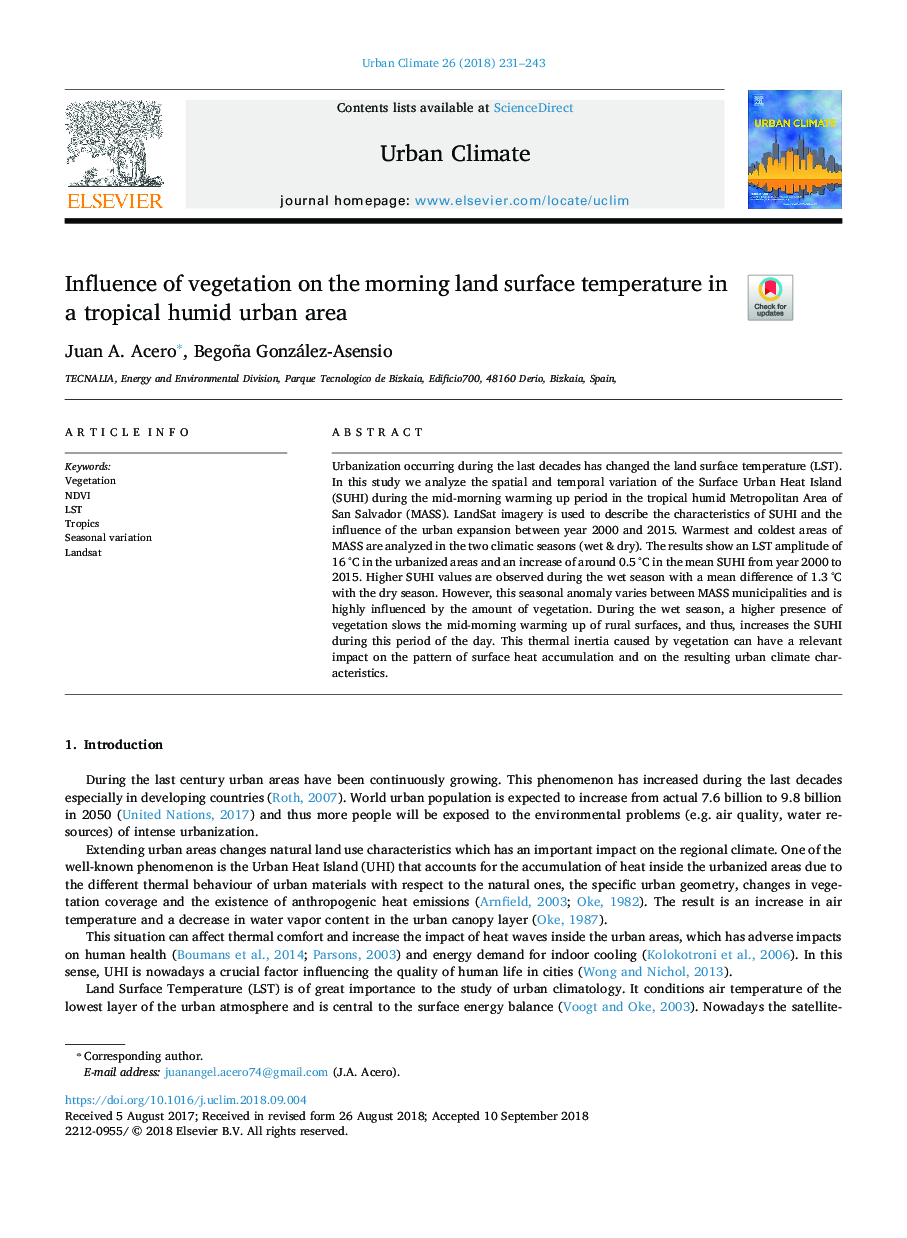| Article ID | Journal | Published Year | Pages | File Type |
|---|---|---|---|---|
| 11000196 | Urban Climate | 2018 | 13 Pages |
Abstract
Urbanization occurring during the last decades has changed the land surface temperature (LST). In this study we analyze the spatial and temporal variation of the Surface Urban Heat Island (SUHI) during the mid-morning warming up period in the tropical humid Metropolitan Area of San Salvador (MASS). LandSat imagery is used to describe the characteristics of SUHI and the influence of the urban expansion between year 2000 and 2015. Warmest and coldest areas of MASS are analyzed in the two climatic seasons (wet & dry). The results show an LST amplitude of 16â¯Â°C in the urbanized areas and an increase of around 0.5â¯Â°C in the mean SUHI from year 2000 to 2015. Higher SUHI values are observed during the wet season with a mean difference of 1.3â¯Â°C with the dry season. However, this seasonal anomaly varies between MASS municipalities and is highly influenced by the amount of vegetation. During the wet season, a higher presence of vegetation slows the mid-morning warming up of rural surfaces, and thus, increases the SUHI during this period of the day. This thermal inertia caused by vegetation can have a relevant impact on the pattern of surface heat accumulation and on the resulting urban climate characteristics.
Related Topics
Physical Sciences and Engineering
Earth and Planetary Sciences
Earth and Planetary Sciences (General)
Authors
Juan A. Acero, Begoña González-Asensio,
